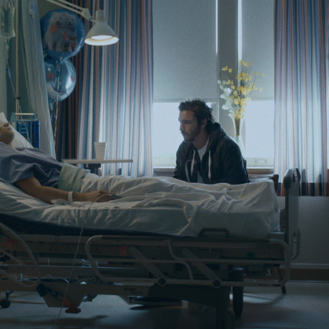The concept of a devout character finding out their secret past is always going to be an intriguing premise – especially when the unexplored involves religion.
That’s what happens to Anna in Pawel Pawlikowski’s Ida. Before she takes her vows of being a nun, Anna’s urged to meet with her only living family member. She sets out to meet her estranged Aunt Wanda, and fortunately does. She’s informed by her agitated Aunt of her Jewish roots, which – obviously – is a massive shift in Anna’s world. Along with finding out her birth name is Ida and that her parents were victims during World War II.
Some filmmakers would have their lead throwing a tantrum or breaking down. Pawlikowski, however, keeps to the meek nature of Agata Trzebuchowska’s Anna. He quietly shows her beliefs slipping, as Trzebuchowska maintains composure that falls between standing her ground and trying to convince herself that this isn’t a dream.
Wanda and Anna embark on a trip to navigate through the lost Jewish history. It’s just as much of a journey for Anna as it is for Wanda. Agata Kulesza plays the distraught leader and looks as if she’s about to combust at any moment when the revealing past strips another layer about her sister.
Pawel Pawlikowski is faithful to Ida’s unhurried pace, as each truth is sensitively touched upon with characters taking plenty of time to think about what has happened. When matched with the striking cinematography, Pawlikowski supplies moments of poetry. The band Ida may be listening to or the record player that drones on in the background as Wanda reevaluates her situation washes over their senses as it does with us.
The techniques used by cinematographers Lukasz Zal and Ryszard Lenczewski turn out beautiful images with framing that’s peculiar but stunning. A character occupies one small area of the screen while the controlling environment fills the rest. It’s very much inspired by the Academy Award winning work in The King’s Speech, but is also hampered by the same setback I found with Tom Hooper’s period piece.
The cinematography starts to heavily call attention to itself as the headroom gets to be more abundant and characters start to fall off the screen. What once looked gorgeous gradually takes on the look of something composed incorrectly and unappealing. The black-and-white picture does keep the picture classy though.
As much as I appreciate Pawlikowski’s filmmaking sticking to the leisurely tones of Anna’s and Wanda’s trip, watching the film also feels like a sluggish mission after a while.
The scenes of intimate reflection are important, but most of these moments go on for way too long. Pawlikowski’s film is artfully edited, but it becomes a problem when the crawling diligence is affecting the audience’s ability to stay tuned in. Ida isn’t the most exciting movie to watch, and I didn’t expect it to be. However, Pawlikowski loses touch with the moviegoing public during the silences and is making a film for himself. As a filmmaker, you can’t lose that connection with the people drawn to your work.
If you choose to see Ida in theatres, I don’t think you’ll regret the decision. The grounded performances with the black-and-white cinematography – flaws and all – is worth the price of admission. But, Pawlikowski’s movie takes your self-control through the ringer continually. If you’re up to the task, you may feel yourself rewarded with Ida. If this doesn’t sound like your cup of tea however, it’s most likely not.





Leave a comment